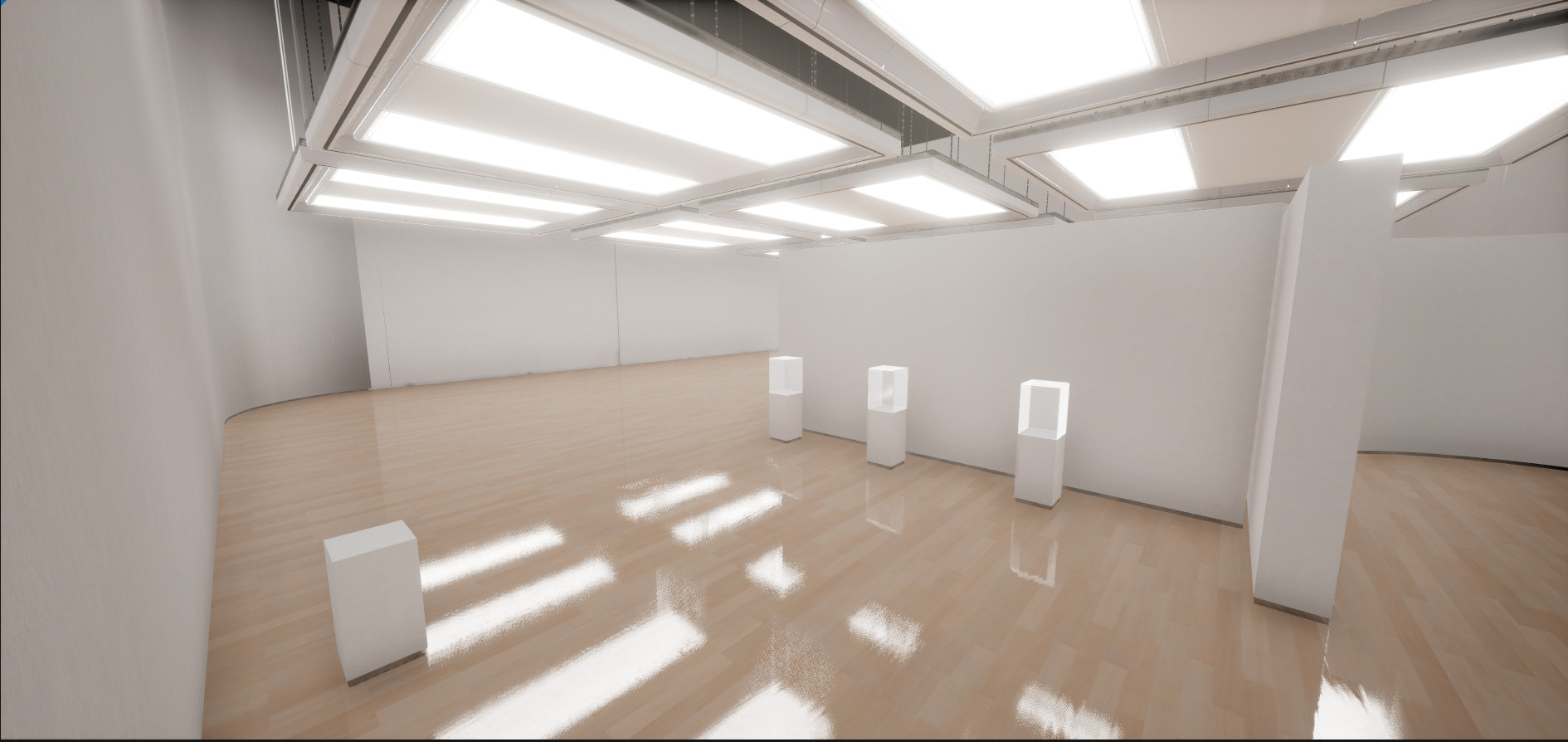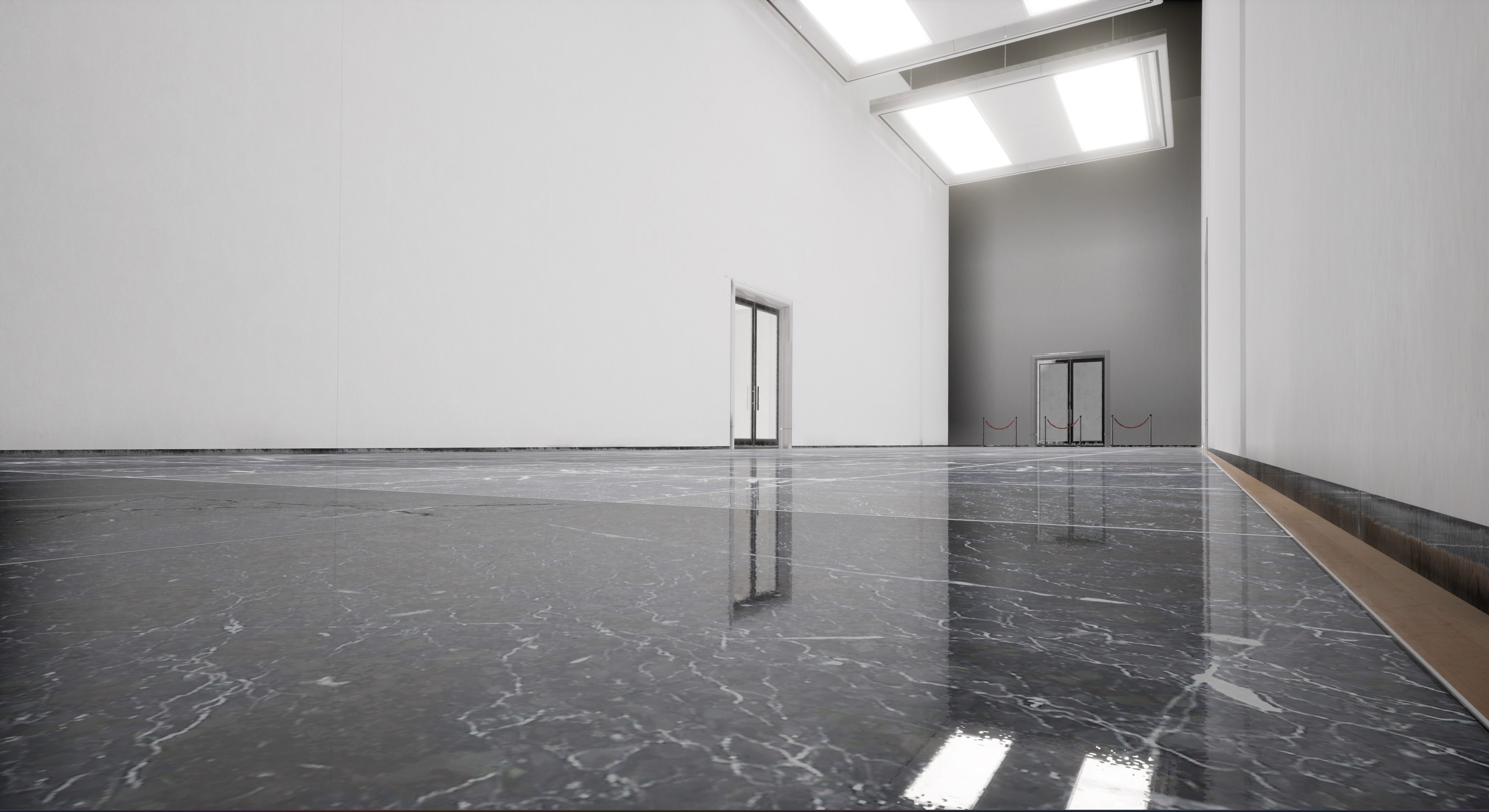GIGEIIN > Digital Museum Department


GIGEIIN > Digital Museum Department
The main activities of this division are research and development and content creation using digital technology to disseminate GIGEIIN’s products to the society. It is headed by Associate Professor Chika Sannomiya (History of Oriental Art, Museology) and includes Professor Hidekazu Tsujiai (Digital Technology), Associate Professor Tetsuya Fujita (Information Processing). GIGEIIN aims to solve various issues by combining analog methods and cutting-edge digital technology. Therefore, we consider it important to collaborate with other divisions to solve the problems each division encounters through digital technology.

Fig. 1 Prototype of virtual museum virtual exhibition space (Unreal Engine 5.3)
We started our activities in 2023. We are working on identifying means to digitally represent the 3D data and other artifacts obtained from the maintenance of various types of equipment and from various departments while organizing these. In recent years, the concept of a virtual space constructed inside a computer and a metaverse that provides services within that space have been attracting attention. Companies have begun to open their offices to the public in virtual spaces and hold events that utilize such spaces. In addition, equipment (head-mounted displays) for experiencing the metaverse is becoming less expensive and more readily available to individuals other than researchers and developers. Although the obstruction to casually experiencing a virtual space and its services has thus been reduced, specific contents and methods for experiencing and communicating in actual virtual space are still deficient. Moreover, methods for designing experiences unique to virtual spaces and methodologies for generating contents suitable for such experiences are required.
The significant advancement of digital technology has enabled the generation of
3D data using familiar devices such as photogrammetry (which generates 3D data from images captured with a smartphone camera) and LiDAR scanners (which use infrared
light to measure the shape of objects and generate 3D data). The iPhone is equipped
with a LiDAR scanner that uses infrared light to measure the shape of objects and
generate 3D data. However, the 3D data generated by these technologies is inaccurate
and does not have a platform for public access. Therefore, this division is developing
a method to record, generate, and publish high-quality 3D data.
This department is working toward the development of a digital museum space originating from the University of Toyama. It would be used to disseminate cultural assets and other attractive artifacts and research observations. As mentioned above, although there is a demand for attractive content experiences in virtual spaces, the methodology has not been established. Companies and universities continue to undertake research and development to identify the best method to achieve this. A major challenge is the representation of cultural assets that have been recorded using analog methods in a virtual space to provide a highly satisfying viewing experience. To address this issue, we are using game engines such as Unreal Engine and Unity to develop a method of viewing cultural properties in a virtual space with reduced data while maintaining
the quality of the recorded 3D data (Figure 1).
In addition, in collaboration with the “History of Kogei and History of Kogei Technology Laboratory” of the Faculty, we are generating 3D data of artworks in the laboratory’s collection. Many of the works of art in the university’s collection were inherited from the previous Takaoka National College. Many of these have high material value for
students and faculty members. Therefore, we are in the process of constructing
a database that would enable the collection to be viewed in three dimensions. To use
this 3D database of artworks as contents for digital museums, high-quality and
high-precision 3D data is required. However, using excessively high-precision 3D data can place a tremendous load on the rendering process even with current computer performance, and a long time may be required to render the 3D data that one wishes to view. This can hinder a smooth viewing experience in real time. To solve this problem,
we have developed a new method that reduces polygon data and uses high-definition textures while ensuring a certain degree of accuracy as 3D data to enable smooth viewing. This is for use on home computers and commercially available head-mounted displays. We are working on the production of contents that can advocate a high-quality viewing experience by reducing polygon data and using high-definition visuals (textures) while ensuring a certain degree of accuracy as 3D data to enable smooth viewing
(Figure 2).
In addition, to enable digital archiving of tangible cultural properties and intangible
cultural properties such as dances and festivals, we are in the process of developing and utilizing motion capture equipment to record human body movements (Figure 3). The “Takaoka Mikurumayama Festival” is held in Takaoka City, Toyama Prefecture, where our campus is located. It is one of the five festivals in Japan to be designated as a nationally important tangible and intangible folk cultural property. The “Owara Kaze no Bon Festival” is one of Toyama Prefecture’s representative events. It has been passed down across generations and is of significant value. It attracts tourists from across the country
wishing to watch the dances. GIGEIIN has installed Noitom’s Perception Neuron and
Sony’s Mocopi, and is currently testing these. By combining the aforementioned 3D data capture of tangible cultural assets with the knowledge of the data capture of intangible cultural assets, it would be feasible to experience festivals in a virtual space (which has been difficult to reproduce in the past) and relive
the movements of craftspeople and use these as educational materials for the next generation (which has been difficult to transmit)
(Figure 4).
In this manner, the Digital Museum Department is engaged in research and development of methods of expression that transcend the boundaries between analog and digital media. Most recently, we have been aiming to open a digital museum originating from the University of Toyama to the general public. We intend to use the contents of this digital museum for a limited number of artworks, and for publicly displaying local cultural assets and the research
results of other faculties of the University. In addition to research,
we are considering an educational program in which students
can experience modeling using virtual space and the recording and application of physical information using motion capture for
application in their production and research.

Figure 6: Prototype 2 of virtual museum virtual exhibition space (Unreal Engine 5.3)
There are no articles to display.
